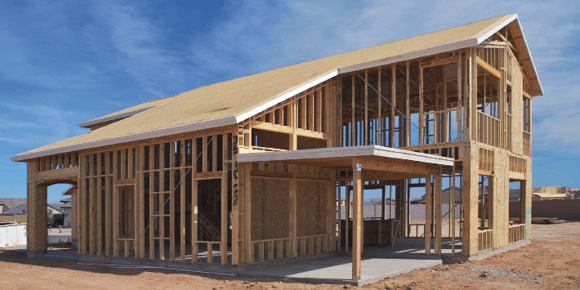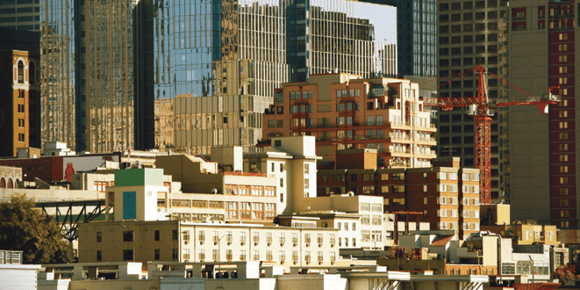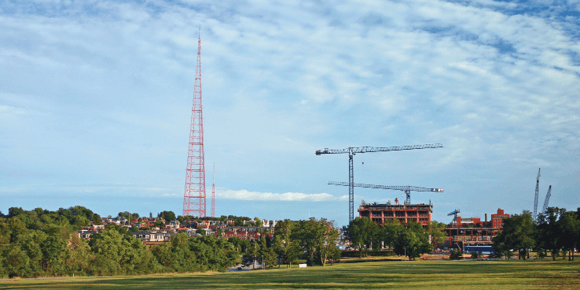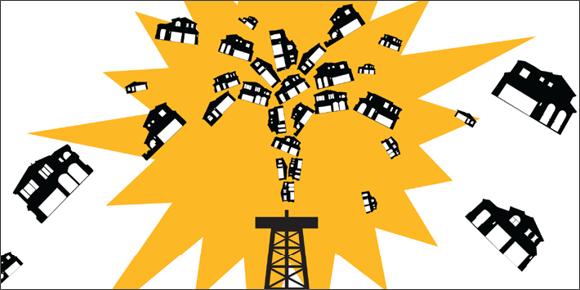The new-construction market appears headed for a rebound. Here’s an in-depth look at four markets.
By Regina Ludes
New homes are a hot commodity these days. Housing starts nationwide totaled more than 1.11 million in 2015, up 10.8 percent from nearly 1.01 million in 2014, while permits for new construction rose 12 percent from 1.03 million in 2014 to 1.18 million in 2015, according to the National Association of Home Builders. An estimated 501,000 new homes were sold in 2015, an increase of 14.5 percent over the 2014 total of 437,000. However, inventory in some markets is so low that homebuilders cannot keep pace with demand. These trends are expected to continue in 2016, thanks to an improving economy, solid job growth, increased consumer confidence and pent-up demand.
While the numbers for new housing are encouraging, homebuilders say the lack of available land for development, the cost of materials and labor, and local government regulations can stymie further development.
The national numbers only tell part of the story. As any CRS agent can tell you, real estate is local, and individual markets face their share of challenges. The Residential Specialist spoke with several CRSs around the country who shared their insights about the new-home market in their locales, the challenges they face and the prospects for the future.

In Phoenix, housing communities that are priced well sell briskly.
Rising from the Ashes
To say that Phoenix has made a remarkable turnaround since the economic downturn would be an understatement. Distressed properties, which once flooded the area, have fallen to below-normal levels, and smartly-conceived housing communities priced well for the market are selling briskly, says Keith Mishkin, CRS, a broker at Cambridge Properties. Construction permits jumped 25 percent from 12,000 in 2014 to 16,000 in 2015.
The local economy is thriving, and an influx of jobs is driving the need for new housing. The city is expected to add 80,000 new jobs in 2016 after 53,000 were created in 2015, Mishkin says, citing statistics from Moody’s. The city anticipates 110,000 people to migrate to the area for these opportunities.
Buyers are purchasing new homes because there’s an abundance of them on the market, says Mishkin. “The gap in pricing between new homes and similar resale homes has shrunk dramatically, fueling this surge in new homes,” he says. Builders are putting more money into common amenities, like lobby areas, club rooms and fitness facilities, which can make a strong first impression on potential buyers, Mishkin says.
To compete with the abundance of Class A luxury apartments in the area, condo developers are offering similar community amenities with superior finishes, such as stone and marble countertops and floors, and top-of-the line appliances. It gives buyers greater confidence about a home knowing that all these extras are built into the price, Mishkin says.
New-home subdivisions range from the mid-$100,000s up to more than $3 million. Every price point is thriving in the current market, Mishkin says, and he sees no sign of a slowdown in 2016.

The city of Seattle has slowed down the pace of new development so newer units can gradually be absorbed into the market.
Faced with Challenges
In Seattle, new housing is needed, but the pace of new construction has slowed and cannot meet demand, says Michael Orbino, CRS, with John L. Scott Real Estate in Bellevue, Washington. Many neighborhoods have less than a one-month supply. The lack of inventory has pushed housing prices up by 50 to 60 percent, while apartment rents are in line with San Francisco. It’s hard to find any new single-family homes for less than $800,000 in Seattle, Orbino says.
Permits for new construction are flat. ”Developers are discouraged from building new condominiums because of strict state regulations on condo development,” Orbino says.
The city also has implemented requirements to slow down the pace of new development so newer units can be absorbed more gradually. Large-scale, master-planned communities that were popular before the downturn are no longer being built, while developers build clusters of single-family homes, usually five or 10 at a time.
Geography is also an issue. Surrounded by mountains and water on three sides, Seattle is land-locked, which means new construction is either being built up with high-rises or as infill projects replacing existing homes. In the downtown area, most new construction is apartment towers and office buildings, which do not have the legal restrictions that condo buildings do.
”There hasn’t been real housing growth in Seattle for a while. The city is looking at how homes are built so more diverse, affordable housing stock can be provided,” Orbino says.

A cowboy entertainer at the Tulsa Oktoberfest performs a rope trick jumping through a lariat.
New Housing a Hot Commodity
Despite a 4 percent dip in new housing starts in 2015, Tulsa, Oklahoma, continues to be a strong market for new homes, buoyed by strong employment in local oil and gas industries. But unlike Seattles vertical growth, Tulsa’s expansion has reached beyond the city limits. “With so much land available and the costs to build so low, new suburbs have developed,” says Gunta Sandmeyer, CRS, with Boulevard Realty Group. ”Meanwhile, in the downtown area, trendier neighborhoods have emerged as builders convert previously untouched old spaces into new condo units.”
Housing starts are projected to total 2,700 in 2015, down from 2,814 in 2014, according to the Tulsa Home Builders Association. Housing starts have steadily increased each year since 2012.
While a typical new home averages 2,500 sq. ft., high-end homes averaging 4,000 to 5,500 sq. ft. are selling for $350,000 to $700,000, Sandmeyer says. These spacious properties include four bedrooms, three-and-a-half baths, formal dining areas and a home office. Three-car garages are in high demand as are theater rooms and space for entertaining.
”Buyers today are buying new because interest rates are still low, the economy in Tulsa is doing well, and new homes offer more modern amenities,” she says. While most of her clients are move-up buyers and young families, Sandmeyer says she has noticed more single, professional women shopping for new homes, too.
As a REALTOR® and an interior designer, she counsels buyers about customizing their home with upgrades and offers staging tips before selling their existing home. Some buyers come to Sandmeyer with a portfolio of design ideas they’ve collected on Pinterest and Instagram. “[Those portfolios] make it easier to work with them because I can see what they want,” Sandmeyer says. ”But it is also challenging because what they want is often not in their budget.”
Sandmeyer is cautiously optimistic about the future. ”Hopefully we won’t have any more shakeups in the oil industry and Tulsa’s economy will remain strong,” she says. ”The inventory is low, and given low interest rates, 2016 should be a good year.”

The Kansas City market has rebounded from the economic downturn, and housing construction increased in 2015.
Slow and Steady Growth
New-home sales activity in Kansas City, Missouri, continues to perform well, says Marcia Cull, CRS, with Reece Nichols, Parkville. ”Usually business slows down during the period after Thanksgiving, but in 2015, I noticed more buyers visiting the newly-built subdivisions in our area,” Cull says. Many buyers of new homes are millennials looking for move-in-ready properties and empty-nesters looking to downsize, she says. ”Just a few years ago, new housing was scarce, but now new homes are being built throughout the city.”
Kansas City rebounded well after the economic downturn, and housing activity increased overall in 2015. Permits for single-family construction rose 10 percent, from 4,271 units in 2014 to 4,700 units in 2015, according to the Home Builders Association of Kansas City.
New homes are available for entry-level buyers for $300,000 to $350,000, while executive homes and custom-built homes start at $400,000, Cull says. Most of the homes Cull sells in her subdivision have 2,800 to 3,000 sq. ft. with four bedrooms, three baths and three-car garages, which are in high demand. Most buyers prefer traditional design over modern or contemporary styles, and they prefer modern finishes and amenities, such as granite counter tops, tile, wood floors and moldings, and walk-in closets. Lots abutting green spaces are in high demand.
Cull says buyers want the best value for their money when shopping for a new home. ”The more amenities and quality features a builder can put into a home and still keep it at a certain price range, the more likely it will be sold quickly.”
Get more facts about new home construction.








